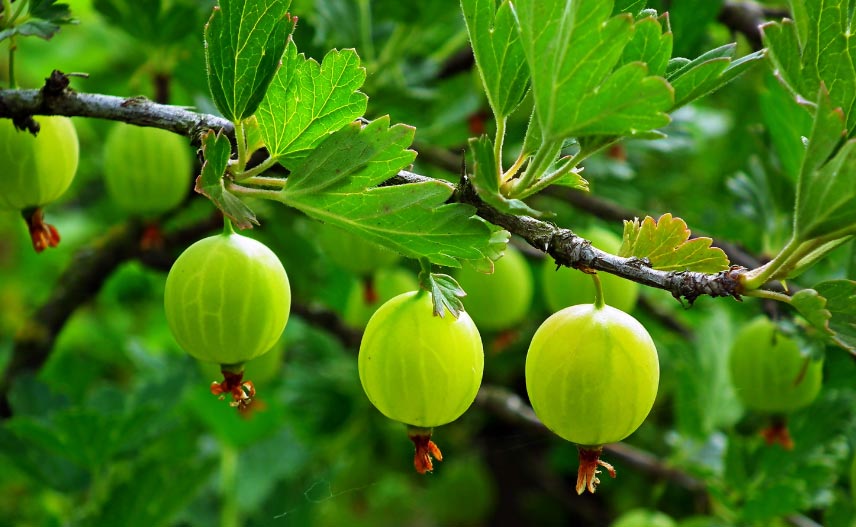Currant
True currants are small berries that grow on shrubs & are more like gooseberries. Black currants have a sweet tart flavour and can be eaten fresh, though they are quite often cooked or sweetened in various ways. Currants are renowned for their very high Vitamin C content. When not in flower, the leaves are highly aromatic and this plant prefers to be grown in full sun and well drained soil.
Elderberry
Elderberry has been used for its reputed health benefits since ancient times. It is extremely easy to grow and care for. It will grow in full sun or partial shade and tolerates a variety of soil conditions. The beneficial blue or purple berries can be made into wine, jam, syrup or pies.
Gooseberry
Gooseberries are a low maintenance, versatile & handsome berry that can be planted almost anywhere and happily grow in part shade. This is another nutritious berry that is easy to grow & revered for its tropical-like flavour. As beautiful as they are tasty – they boast a tart ambrosia.
Haskap Berry – Honeyberry
Native to Canada, this little-known berry is remarkably cold hardy. It is in the same family as the honeysuckle but produces uniquely shaped edible fruit. The most common description of the flavour would be a cross between blueberries and raspberries. A special treat you won’t want to miss.





